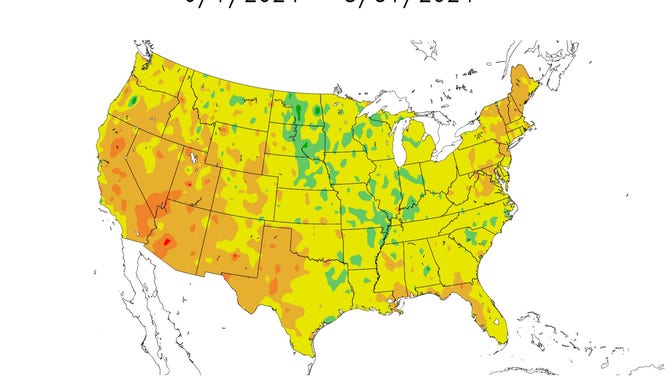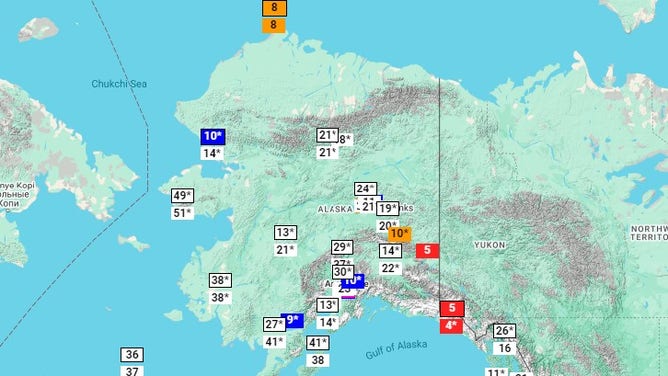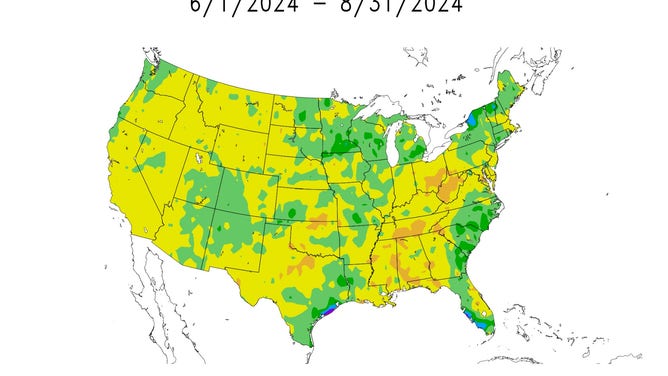Summer weather recap: Who baked in the heat and who escaped the frying pan?
According to NOAA, June 2024 ranked as the second warmest June on record, with an average temperature of 3.4 °F above average. July ranked as the 11th warmest in the 130-year record, with temperatures of 2.1 °F above average.
Several dozen cities record their hottest summers on record in 2024
There were 87 sites that recorded their hottest summer on record this year, part of over 500 that had at least a Top 10 hottest summer. On the flip side, not one cold summer day record was set in the continental US.
Unlike recent summers, when it felt like the country was on the brink of setting a new heat record every year, the summer of 2024 was a mixed bag. Some areas experienced higher-than-average temperatures, while others were slightly cooler than usual.
Where the heat was intense, records were broken in dozens of cities, including Phoenix, Las Vegas and San Jose, California, all of which reported their hottest summer on record.
Throughout most of the season, ridges of high pressure-controlled weather patterns across the Southwest, leading to warm overnight lows and sizzling afternoon highs at many observation sites across the West.
THE HOTTEST PLACE ON EARTH JUST SET ITS HOTTEST MONTH ON RECORD

Summer temperature rankings
(FOX Weather)
The extreme heat caused the Mojave Desert to experience its warmest month on record, with an average temperature of 108.5 degrees.
Phoenix also entered into a record streak of 100 consecutive days with high temperatures above 100 degrees.
PHOENIX HITS AT LEAST 100 DEGREES FOR 100 DAYS IN A ROW, SHATTERING RECORD
The first month of the season was the warmest with temperatures in June averaging some 3.4 °F above average, which was warm enough to have the month rank as second warmest out of 130 years of record keeping.
Interestingly enough, July 22, 2024, was the hottest day of the year globally, with an average temperature of 62.87 degrees Fahrenheit, according to Europe’s Copernicus Climate Change Service.
And in August, the country was certainly warm with a heat wave impacting Chicago, Cincinnati and Nashville, but the heat dome did not have the staying power of features tracked earlier in the season.

Temperature departure from normal for summer months
(FOX Weather)
HERE’S WHEN TO EXPECT THE FIRST FREEZE OF THE SEASON
Communities that didn’t experience a warmer than average summer stretched from the mid-Mississippi Valley to the Upper Midwest, with a few sites recording one of their top 10 coolest summers on record.
One of the coolest locations across the Lower 48 was Minnesota City, Minnesota, which recorded its third-coolest summer ever, with an average temperature of just 71.1 degrees.
Outside the Lower 48, much of Alaska experienced cooler-than-usual temperatures, breaking the trend of recent years.
Anchorage, Kotzebue, and Iliamna all reported significantly below-average temperatures. However, Barrow, Yakutat, and Northway experienced some of their hottest summer readings, ranking among the 10 hottest on record.

Alaska temperature rankings for summer (Red/Orange = hottest; Pink/Blue = Coolest)
(FOX Weather)
WHAT SEASON DO FRUITS AND VEGETABLES GROW IN?
Who had the rainiest summer?
Recipients of the most rainfall during the summer months were in tropically-influenced zones stretching from Texas to Florida and even into the Northeast, with remnants of two tropical cyclones contributing to the precipitation.
Communities south of Houston along the western Gulf Coast and south of Tampa on Florida’s west coast saw the heaviest rainfall, partly due to tropical activity.
Hurricane Beryl made landfall near Matagorda, Texas, on July 8 as a Category 1 cyclone, dropping more than a foot of rain in some areas.
The hurricane’s remnants also caused flash flooding and a tornado outbreak as far north as New York.

Precipitation departure from normal for summer months
(FOX Weather)
Galveston, Texas, one of the cities directly impacted by Beryl, finished summer with nearly double its typical annual rainfall, receiving 47.80 inches of precipitation.
Along Florida’s Gulf Coast, the combination of a tropical disturbance in June and Hurricane Debby in July contributed to some of the highest precipitation totals in 130 years.
Fort Myers is one of several locations in the Sunshine State that reported abundant rainfall during the three-month season.
The area’s observation site recorded 43.47 inches of rainfall over the summer, surpassing what is typical for a 12-month period in Southwest Florida.

Wettest summer on record
(FOX Weather)
Similar to Beryl, Debby’s remnants brought flash flooding and reports of severe weather along the Eastern Seaboard.
The standing water in Florida and other communities along the East Coast expanded breeding grounds for mosquitoes and illnesses such as eastern equine encephalitis.
Some towns in Massachusetts even went so far as to warn residents to stay indoors from around sunset through late evening to limit interactions with the insects.
On the flip side, many of the driest areas were in the Desert Southwest, where the annual monsoon was nonexistent for some regions.
The lack of an influx of moisture could result in significant ramifications for both water resources and the drought status, which have continued to plague the region.
